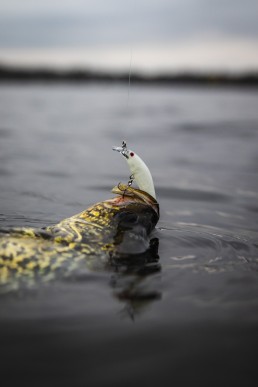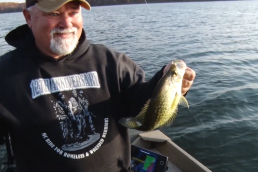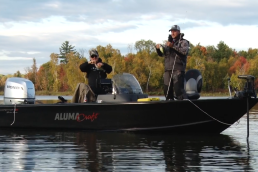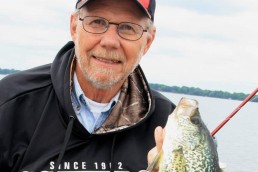Summertime Crappies
SHARE THIS POST
While bass are the nation’s most popular fish species, panfish—crappies in particular—are also high on the priority level for many anglers—and for good reason. They not only make great table fare, but also provide fast-paced action. Crappies are found across the United States and inhabit a variety of waters including lakes, rivers and flowages.
In the Midwest, crappies are popular targets during certain times of the year. But for many anglers, these fish are the “kings of spring.” Springtime crappies pile into the shallows to create future generations. Mass schools of fish are closely followed by groups of fishermen intending to obtain a few meals of fish.
As the season progresses and gamefish seasons open, droves of crappie fisherman quickly transition their efforts toward toothier fish species—which can be a big mistake. Productive days during the summer months often yield much higher crappie catch rates than those in spring. The challenges of summer crappies can be a lot more rewarding than you might think.
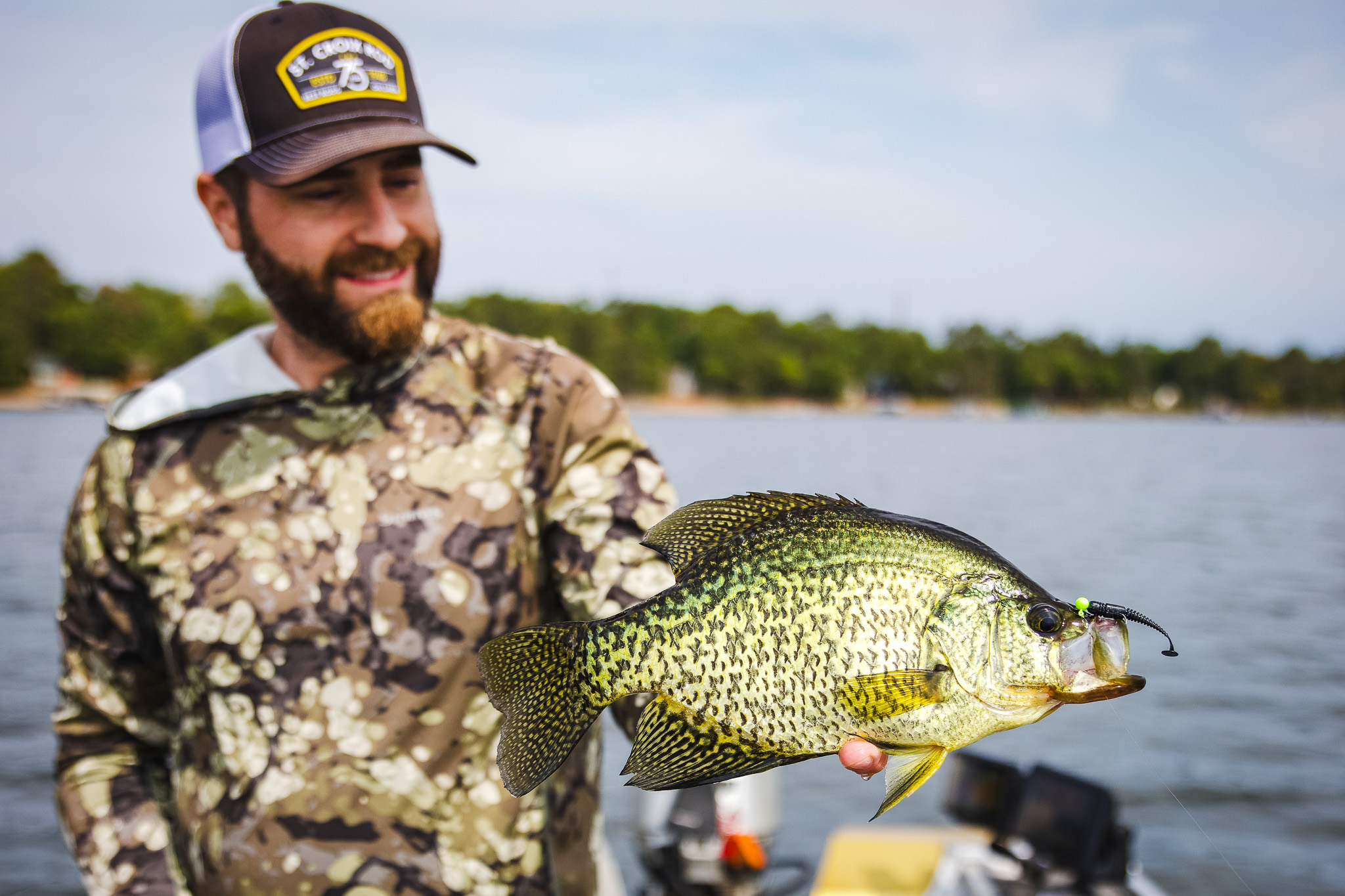
Location
Anglers often question where crappies move to after they wrap things up in the shallows. Likely, they didn’t move far. Start your search near areas where they were located during the spawn—which includes shallow, warm-water bays, often with some sort of vegetation. Day-in and day-out, lush, healthy vegetation adjacent to spawning areas typically have the highest productivity.
If you have no idea where crappies spawned, begin your search along a healthy weed line. Depending on the body of water, certain vegetation types will be more productive than others. In this part of the country, coontail and cabbage are ideal weed types, but there are plenty of bodies of water where these aren’t found in abundance. In these types of situations, vegetation like lily pads can provide a sense of security for crappies, at least until they move out deeper for summer.
Throughout the summer months, schools of crappies typically concentrate along outer weed edges, as well as pockets and holes in weedy cover. In certain situations, fish will push further into the weeds; and in others, push out away from the edges, yet often remaining near the weeds.
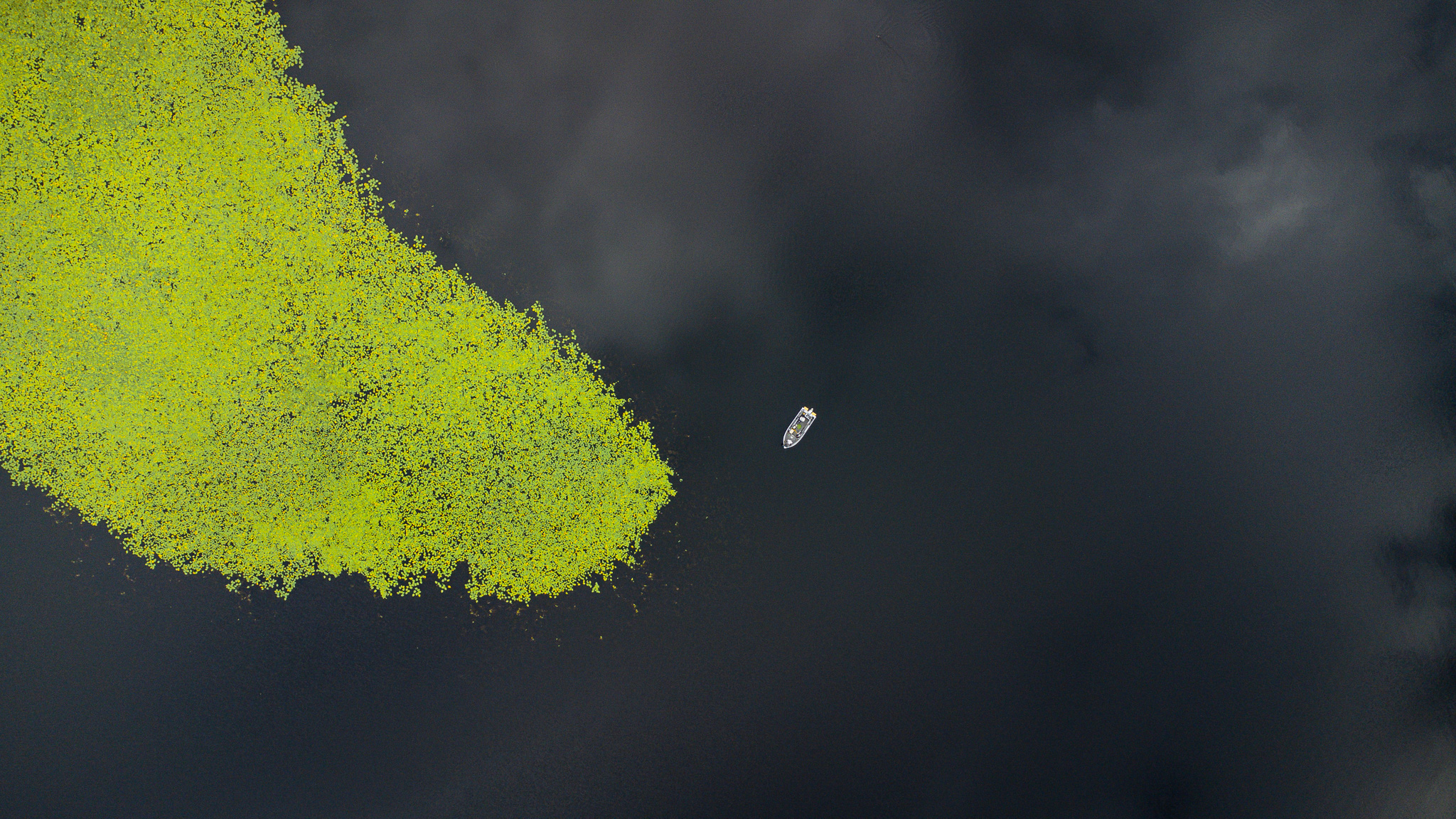
As the season progresses, crappies will also inhabit other areas, often in slightly deeper water. One of the more untapped summer bites occurs in mid-depth basins of a lake. Expansive flats resembling a barren wasteland are some of the best areas to locate packs of roaming crappies. Generally, these areas are found within reasonable proximity to key weed lines, but in terms of cover, these basins offer nothing of visible importance. The best way to describe them is as “in-between” areas often found between the shallow cover and main-lake basins—often in the 15- to 20-foot range. Fish can be harder to find in these areas, but in my experience, they’re typically aggressive.
Woody cover—such as man-made cribs or submerged timber—is also a safe bet throughout the summer months. Cover can act as a crappie magnet regardless of the time of year, but especially tends to concentrate fish toward the tail end of summer. In many lakes, it’s not uncommon to find fish cribs placed throughout the featureless basin areas of a lake.
Electronics are invaluable for tracking down summer crappies, as they allow you to quickly eliminate productive water and focus on areas that hold fish. Side Imaging is an invaluable tool for locating weed lines, cover and shallower fish, while 2D Sonar and Down Imaging are more reliable for deeper scenarios. The advent of Forward-Facing Sonar (FFS) has drastically changed the ways in which anglers search for summertime crappies. Much like its use in ice fishing, FFS allows anglers to “see” 100 feet or more in any direction, which shortens the fish-finding curve. Such tools provide the ability to tell if fish are present and make accurate casts to them without spooking fish.
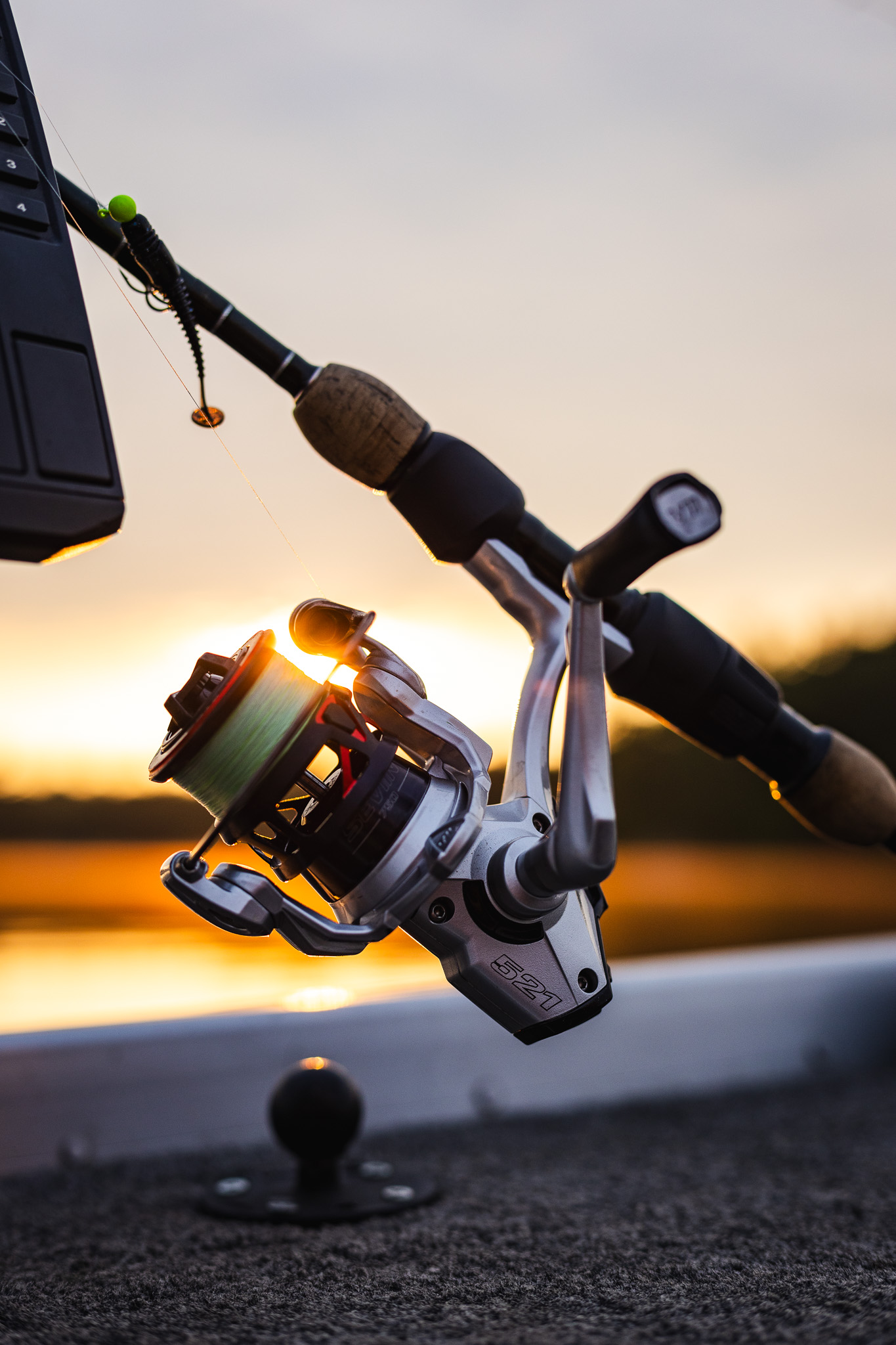
Gear
There’s an old rule of thumb for the use of live bait: If your hands get cold, it’s a good time for using live bait. Well, your hands aren’t going to get too cold during the summer months, so leave the live bait at home. During this warm-water period, artificial lures will outproduce live bait in almost every scenario. Crappies are often at peak activity levels, so artificial presentations are the way to go—including both soft lures and hard baits.
Are you enjoying this post?
You can be among the first to get the latest info on where to go, what to use and how to use it!
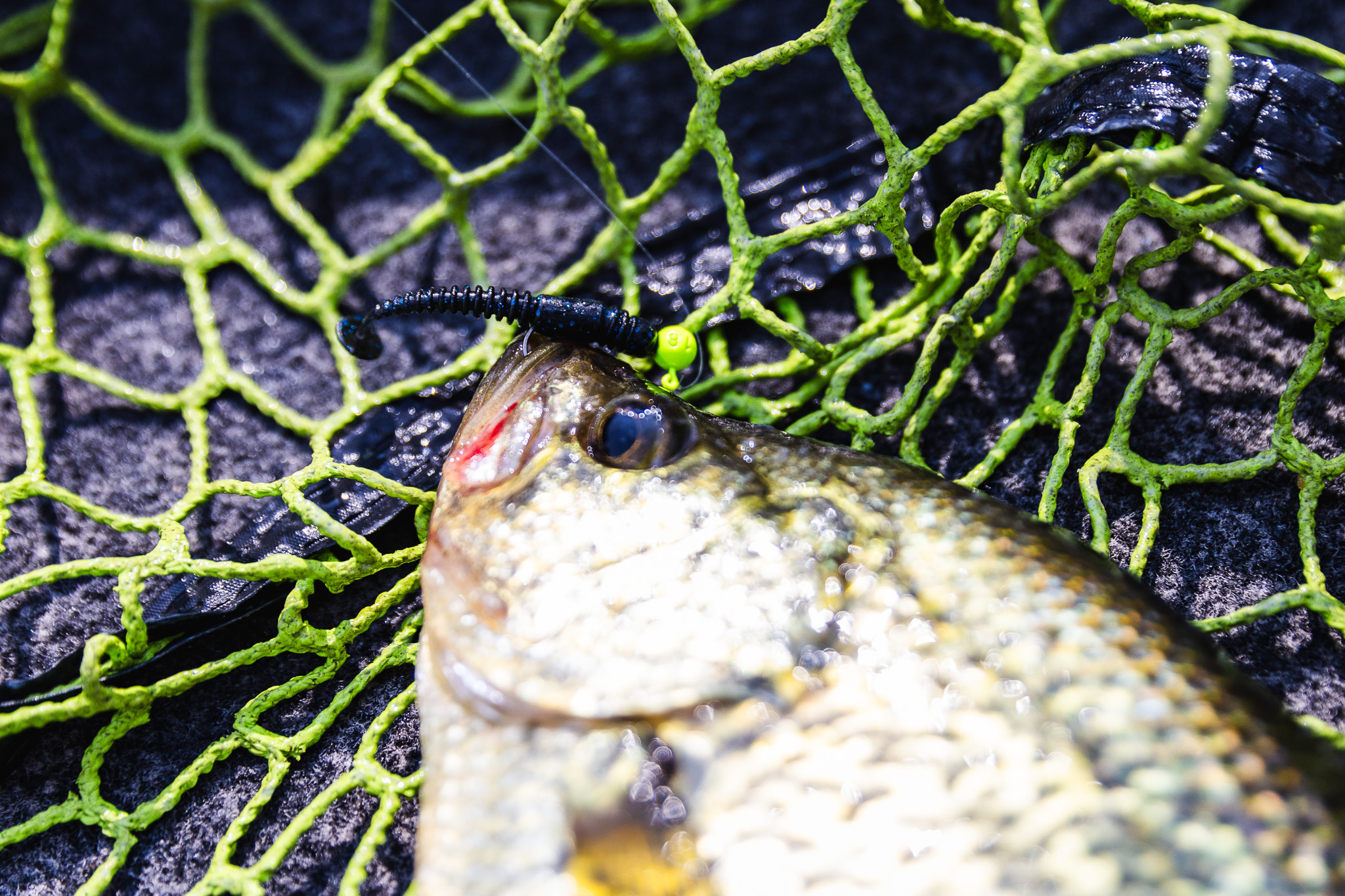
Paddletails, grubs and tubes are among the top choices for summertime slabs. If you were forced to rely on just one lure, a 2-inch swimbait, like the Eurotackle B-Vibe, would be hard to beat. The main reason: their versatility. These small swimbaits can be cast, vertically jigged, and fished anywhere in the water column simply by adjusting retrieve speed or weight. Rigging plastics on a 1/32- to 1/8-ounce jig head will cover almost all fishing conditions, with jigs in 1/16-ounce class being the most versatile. Use lighter options in shallower situations or if there’s a likelihood of encountering thick weeds.
Hard baits also have their place during the summer months. A less common, but ultra-effective presentation for weed-oriented fish, involves micro jerkbaits like the Eurotackle Z-Spender. This bait category is growing in popularity for use during the pre-spawn period but shouldn’t be forgotten in the summer months. Most small jerkbaits are designed to dive just a few feet deep, so they’re perfect for working over the tops of weed flats. Remember to pause on the retrieve—that’s usually when fish bite. Micro crankbaits are also great choices for covering water, especially when fishing weed edges.
When it comes to panfish rods, long gone are the days of whippy, noodle-like panfish rods. Many manufacturers have developed high-end panfish rods with fast- to extra-fast-actions which allow anglers to precisely work light lures, make quick hooksets and to feel the lightest of bites. St. Croix Rod has developed several finely tuned panfish rods in their lineup. In the Panfish Series, Avid Panfish and Legend Panfish rods are designed to function at the highest level for anglers of any budget. For most scenarios a crappie angler will encounter, a 7-foot, light-power, extra-fast-action rod is hard to beat. These versatile rods allow you to fish lures from 1/64- to 1/8-ounce using a wide spectrum of techniques.
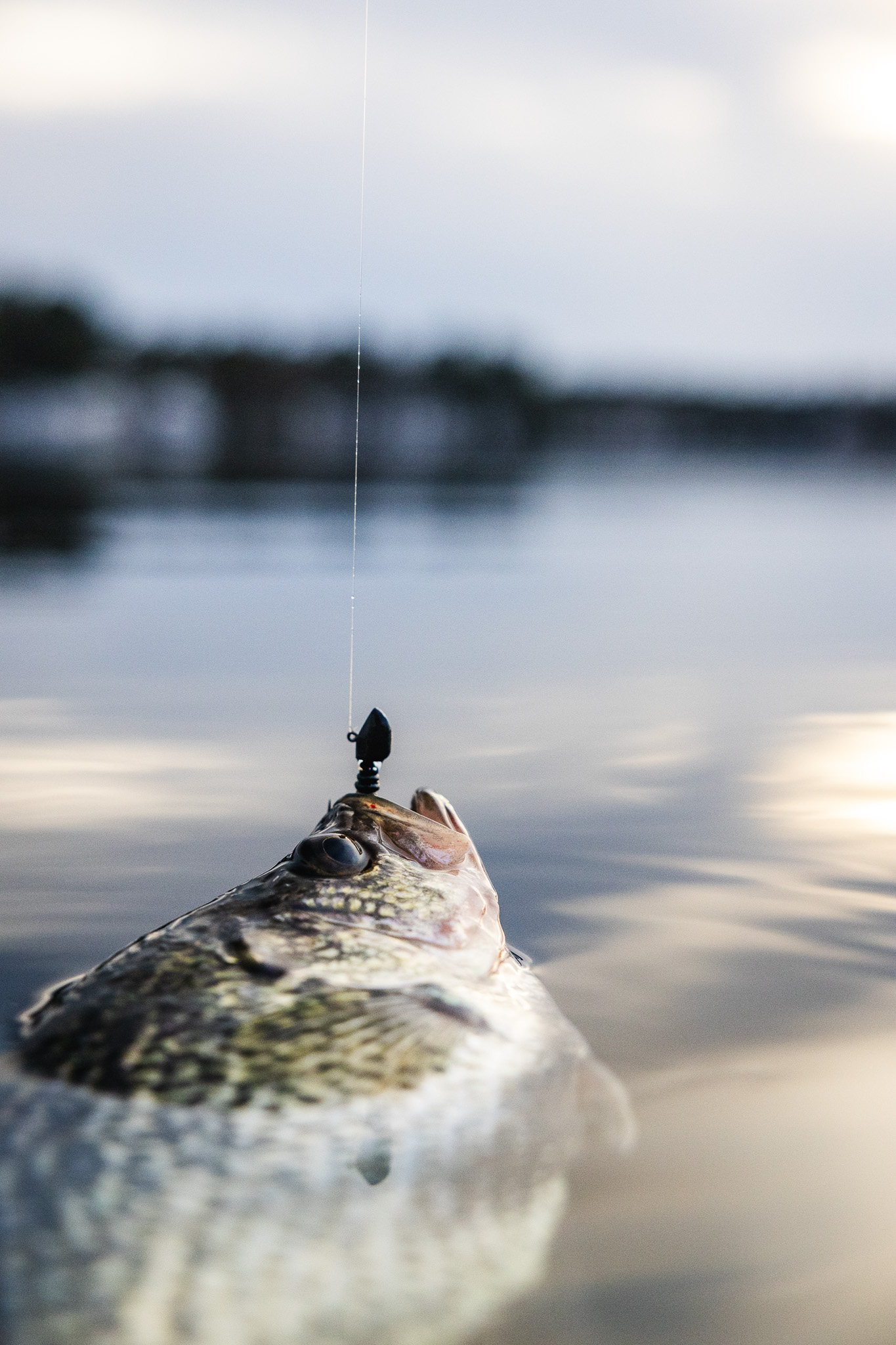
Pair rods of this type with an appropriately sized reel, which in most situations is a 750-1000 series reel. Lines in the 4- to 6-pound class are preferred depending on specific application. High-visibility microbraids are advantageous for summertime crappies. They increase the overall sensitivity of the setup and allow you to watch line movements to detect bites before they are even felt. Braid presentations are best paired with a light fluorocarbon leader for invisibility and to cushion shock on hooksets.
The techniques
Summertime slabs can be located via a few key techniques: namely casting, trolling and vertical jigging. Each technique excels in different situations.
Casting is arguably the best choice for tracking down summertime crappies. In these scenarios, soft plastic swimbaits are king. They make great search baits, and when paired with forward-facing sonar, the combination is hard to beat. Being able to gauge distance and make precise casts is deadly, especially when fishing for crappies in featureless areas.
For more traditional approaches, casting methods are still beneficial. On your initial casts, start reeling as soon as the lure hits the water. After a few casts, let the lure sink a little before reeling. This method helps pinpoint the depths at which the fish are located. If you start getting bit, anchor up or Spot-Lock, as there are likely more fish nearby. If you aren’t finding fish, keep moving.
Trolling patterns are most efficient for locating scattered fish—and work well for both weed line-oriented and suspended fish. Trolling speeds vary depending on the situation and conditions, but typically range between 0.75 and 2.0 mph. Micro crankbaits, lipless crankbaits and soft plastics can be used via this method. For weed-oriented fish, do your best to follow the edges of the weeds. It’s sometimes necessary to move on top of the weeds, so pay attention to which speeds keep your lures just above and out of the weeds. Make sure you have enough distance between the boat and lure; sometimes, being too close results in catching fewer fish.
Vertical jigging typically doesn’t come into play until fish make the move to deeper water in fall, or when they’re in woody cover. Crappies relying on woody cover, like cribs, often hold tight to the source, so vertical methods are among the most effective. Smaller open-water plastics and ice plastics are ideal presentations for these situations.
Regardless of how you target summertime crappies, don’t be surprised if you find a rogue largemouth, pike or walleye in your ventures, as they also tend to roam these same areas.
MWO
SHARE THIS POST
Did you enjoy this post?
You can be among the first to get the latest info on where to go, what to use and how to use it!
